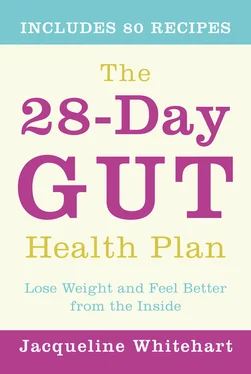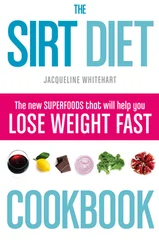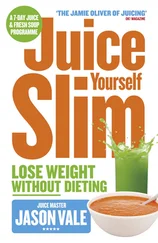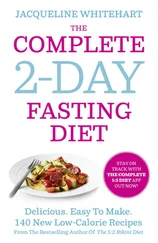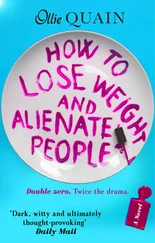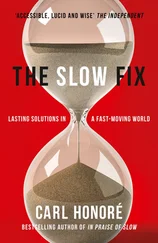Cutting out trigger foods also forces us to cook more real food. Do you believe your ready meal doesn’t contain gas-inducing veg? Wrong. It’s in the stock. Think your cereal bar is good for you? Wrong. It contains at least twenty ingredients including five kinds of sugar or sweetener.
But don’t worry. I know you don’t want to spend hours in the kitchen, which is why I’ve included a whole section of easy and delicious recipes for you to try. My recipes are always fresh and simple, use common ingredients and have been tried and tested by me. All those faffy bits that restaurant chefs like to add to make their food look beautiful (but take half a day to prepare) … they’re not in my kitchen.
Onions and garlic are two of the more common causes of a sensitive belly. They are potent, gassy vegetables and even the tiniest amount can set many people off. I’ll introduce you to a new cheap and easy-to-get-hold-of spice that you’ve probably never even heard of. Add a pinch of this to a dish to add natural onion flavour, without the tummy consequences – and without the chopping! What is it? You’ll have to keep reading to find out!
Gut sensitivity affects as many as 10 to 15 per cent of people in the UK and that figure is rising. And that doesn’t even include the thousands – perhaps even millions – of people with mild or occasional issues who just battle on and never visit the doctor or discuss it with anyone.
What I’d like to show you in this book is a way to get to grips with the causes of your gut-health problems. For just one month, we’ll cut out possible trigger foods and introduce them again in a controlled fashion. You’ll get your own personalized guide to foods you can eat with no problems, foods you can eat in moderation and foods to avoid.
The trigger food groups that we’ll be looking at are: milk, red meat, nightshade (such as tomatoes and chillies), gassy vegetables and wheat.
Please don’t think, ‘That’s it. You’re telling me not to drink milk or eat bread ever again.’ First of all, it is rare to be intolerant to both wheat and milk. And even if you find foods that you are intolerant to, you’ll hopefully still be able to eat them in small quantities. You’ll know how to choose the right foods for you. I’ll give you the tools to help you make your own choices. It’s like drinking alcohol. We all know that it gives us a hangover the next morning, but sometimes we do it anyway. You might find that tomatoes give you a rotten tummy ache, but occasionally you’ll think it’s a price worth paying.
A LITTLE BIT ABOUT DIFFERENT GUT SENSITIVITIES
One of the things that you quickly find when exploring gut sensitivities is that no two people are the same. How we react to certain foods and how our digestive systems behave is unique to us. Yet the mechanism is the same for everyone. And the root causes of all digestive issues are the same: inflammation of the gut lining, foods not being digested properly and the aptly titled ‘leaky gut’.
In this book, I’ll look at the root causes of digestive issues and explain how this can lead to IBS-like symptoms: stomach cramps and bloating and also to inflammation throughout our body. Frequent headaches, sinus pain and achy joints can all be linked back to our digestion.
HOW DOES THE 28-DAY GUT-HEALTH PLAN WORK?
The 28-Day Gut-Health Plan is a unique and simple programme that anyone can follow. With a scientific basis, down-to-earth advice and delicious recipes, The Gut-Health Plandelivers wellness, weight loss and a healthier gut.
The plan acknowledges that there are five common food triggers, as I’ve already mentioned – wheat, milk, nightshade, red meat and gassy vegetables – the cause of over 95 per cent of digestive difficulties. We rest the gut for a week then introduce each trigger individually on a three-day cycle to come up with a detailed plan of your own personal sensitivities.
The plan starts with a simple gut assessment to help you work out ‘what’s up’. You then follow a cycle of rest and food trials for the twenty-eight-day period, while recording your progress in a Gut-Health Diary. Plus you’ll get my own personal brand of enthusiasm, advice and dedication to help you every step of the way.
At the end of the plan, as well as feeling better, having a flatter stomach and losing weight, you’ll complete a 28-Day Review. The review is designed to be your ‘take-away’ from the programme, with a simple checklist of what to eat and what to avoid for your own personal gut health.
We can’t fix decades of ‘food on the run’ and ‘processed food mania’ in just one month. But we can help you make significant and noticeable changes in just four weeks. And with the tools that this programme provides, you can make better choices and continue to improve your gut in the long term.
We start in the Rest and Restore Phase, also known as the R&R phase, by cutting out damaging trigger foods. It can be limited but not boring with all the delicious recipes I have created for you to try. The diet is also low in sugar and as you will be avoiding processed food and eating three balanced meals a day, you will naturally lose weight and feel better.
Don’t worry if you feel more bloated or your symptoms get worse over the first week. You are asking your body to do an awful lot. In fact the first week is really about building up the good bacteria and strengthening the gut so you are ready to start afresh in week two. If at any stage you hit a blip and feel your gut health deteriorating, put yourself back on the R&R programme.
Then over the following three weeks, you test each problem food individually, recording any gut consequences as you go. In this way, you build up a detailed picture of your own personal sensitivities.
WHAT’S WRONG WITH MY GUT?
An imbalanced digestive system is like a polluted river. It’s grey and clogged with blockages. Years and years of pollution mean that the river is clogged up and the fish are few and far between.
Your gut lining is like a riverbank, muddy and bulging. The food you eat is like the water running through the river: it chugs along slowly, getting stuck and polluted. The fish are the good bacteria that have been killed off by years of ‘food on the run’.
During the 28-Day Gut-Health Plan, we are going to cut out all the pollution – the junk foods and trigger foods – so that the river runs clear. We are going to reintroduce the ‘fish’ by adding probiotics to our diet. Then our gut will be strong again, and with a strong, healthy gut, the whole body is healthy and renewed.
COMMON GUT PROBLEMS
The symptoms of an unhealthy gut include bloating, gas, cramps, food sensitivities and aches and pains.
If these symptoms affect your daily life severely, this is classed as a medical problem and people are often diagnosed by their doctors as suffering from IBS. But the majority of us haven’t reached that level. We’re struggling on, just managing, and yet slowly the symptoms become more frequent and gut health becomes more of a worry.
The plan aims to reduce your symptoms and helps you learn what foods you should avoid, what foods you can have in moderation and the foods of which you can eat as much as you like.
The symptoms we are hoping to address are:
1.Stomach cramps
2.Bloating and swelling of your stomach
3.Diarrhoea
4.Constipation
5.Excessive Wind
THE PATH TO IBS
The five symptoms – stomach cramps, bloating, diarrhoea, constipation and excessive wind – that are classed as gut-health symptoms are also the symptoms of IBS. Whether you have IBS or not is simply a matter of severity. There is no test that you pass or fail for IBS; it is just a question of how your symptoms affect your daily life. If you get severe stomach cramps overnight then this means that you don’t sleep well and your whole life is affected. This would be IBS. But occasional symptoms are annoying and we tend to just pick ourselves up and get on with it. The trouble is, year on year, your symptoms will slowly and almost imperceptibly get worse. You learn to manage them better, not complaining and just carrying on.
Читать дальше
